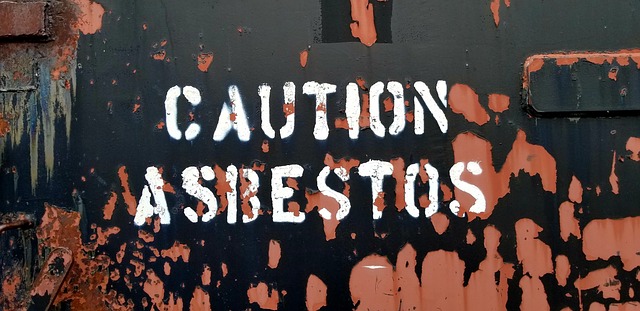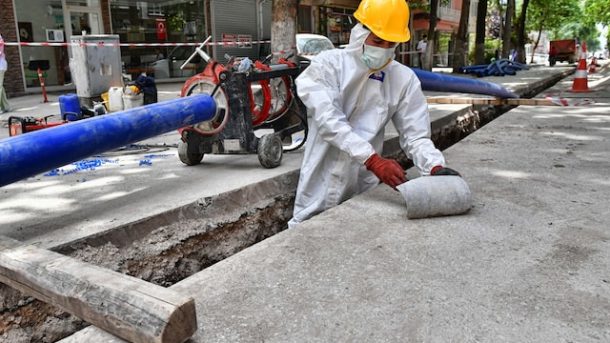Recognizing the potential causes and symptoms of asbestos-related illnesses is important in order to protect yourself from health risks associated with exposure. Asbestos has long been used as a building material due to its fire-retardant characteristics, but inhalation of asbestos fibers can have serious consequences for your health.
In this blog post, we’ll discuss the common sources of asbestos exposure and provide an overview of the potential signs and symptoms associated with each type. We’ll also explore treatments available should you or someone you know be diagnosed with an asbestos-related illness. By arming ourselves with knowledge on this subject, we’re better able to recognize warning signs and plan accordingly in order to protect our communities from environmental toxins like asbestos.
What Is Asbestos Exposure And Its Potential Health Effects
Asbestos is a naturally occurring mineral that contains tiny fibres, which can easily be inhaled. Once inside the body, these fibers can cause damage to the lungs and other organs, leading to serious health issues such as lung cancer, mesothelioma, and asbestosis. While asbestos was once widely used in construction and other industries, it has since been banned or heavily regulated in many countries due to its health risks. However, exposure can still occur in older buildings and during renovation or demolition work. It is important to be aware of the dangers and take steps to protect yourself and those around you from asbestos exposure.
Common Sources Of Asbestos Exposure
Asbestos was commonly used in building materials before the 1980s, meaning many people may have had exposure in their homes or workplaces. Occupational exposure is the most common source, with workers in construction, shipbuilding, and manufacturing industries being particularly at risk.
However, exposure can also occur through do-it-yourself home renovations or even second-hand exposure from a family member who works with asbestos. Namely, the experts at GBAR Group say that back in the 1940s and 1950s, the majority of homes included asbestos in the walls, roofs, floors, and ceilings. Nowadays, you should be able to get a quote from an asbestos removal company in order to safely remove these materials. Make sure to research your local companies as only a certified specialist can handle asbestos safely.
Symptoms To Look Out For In Case Of Asbestos Exposure
If you suspect you may have been exposed to asbestos, keep an eye out for persistent coughing, chest pain, and shortness of breath. These symptoms can often take years to appear, but this does not make them any less serious. Other signs may include fatigue, weight loss, and difficulty swallowing. It’s important to be aware of these symptoms and seek medical attention immediately if they present themselves, as early detection and treatment can greatly improve your chances of recovery.

Diagnosing Asbestos Related Diseases
The harmful mineral can cause numerous diseases, including mesothelioma, asbestosis, and lung cancer, many of which take years or even decades to develop. Unfortunately, these conditions often share symptoms with other respiratory diseases and can be difficult to diagnose. Therefore, if you have been exposed to asbestos in the past, it is essential to seek medical advice, especially if you begin to experience shortness of breath, chest pains, or a persistent cough. Early detection and prompt treatment can significantly improve your prognosis and quality of life.
Treatments Available For People Exposed To Asbestos
Asbestos exposure can lead to serious health conditions, such as mesothelioma and lung cancer. Fortunately, there are treatments available for those who have been exposed to asbestos. The type of treatment will depend on the individual’s specific condition but may include surgery, radiation therapy, and chemotherapy.
Surgery may involve the removal of the affected area or the entire lung, depending on the extent of the damage. Radiation therapy can be used to target and kill cancerous cells, while chemotherapy involves the use of drugs to destroy cancer cells. It is important to seek medical attention if you have been exposed to asbestos, as early detection and treatment can greatly improve outcomes.
Asbestos exposure is a serious health threat that can have long-term and sometimes even fatal consequences. It is important to monitor for symptoms associated with asbestos-related disease and consult a medical professional if there are questions or concerns about exposure.
Furthermore, households and workplaces should take steps to reduce the risk of asbestos exposure, such as having any building materials containing asbestos tested and inspected before using them. By taking preventive measures, you can ensure that you are safe from exposure to asbestos.







